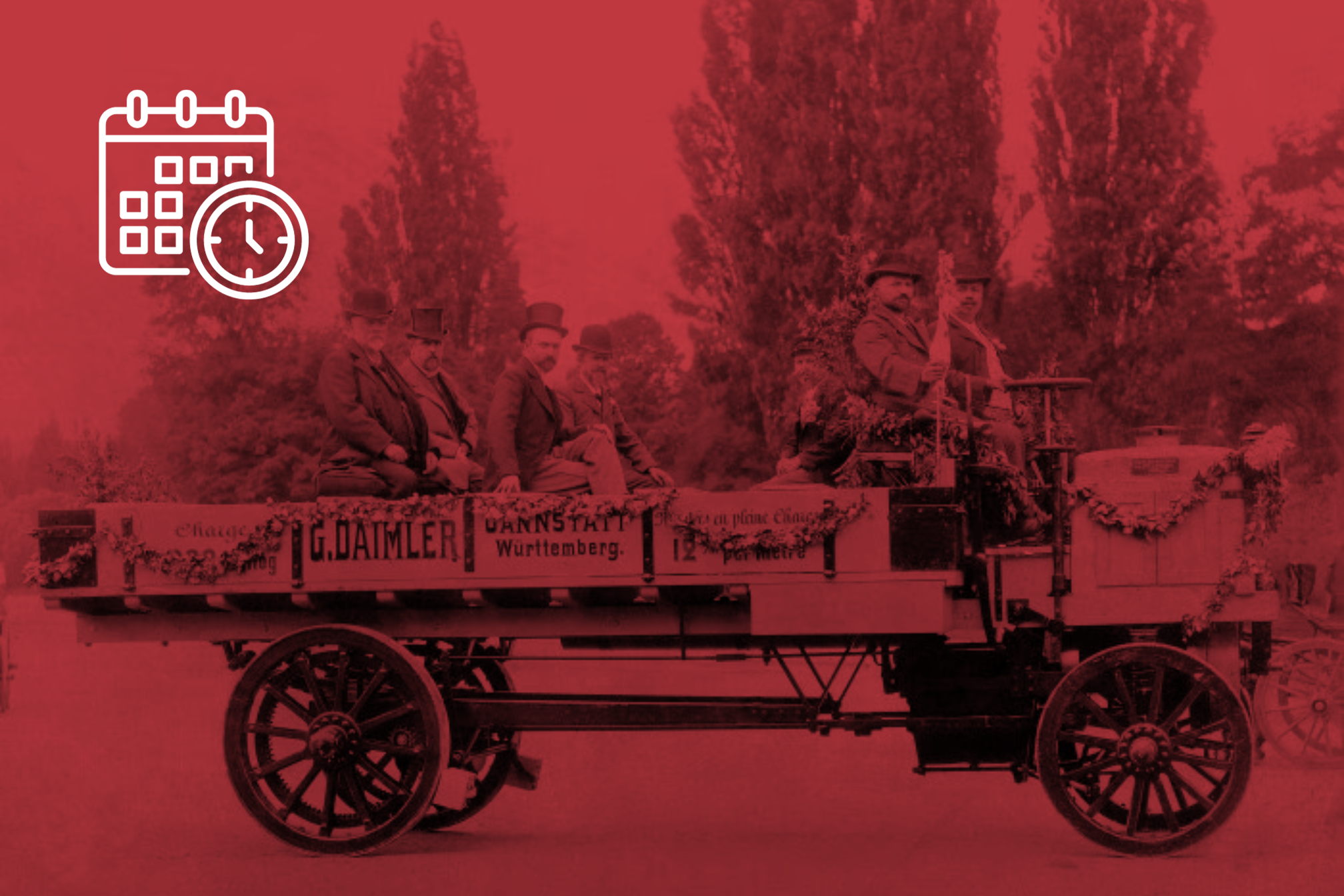From the dusty roads of the late 19th century to the digital highways of the 21st, the trucking industry has been the unsung hero of American progress. This industry, often termed the lifeblood of the U.S. economy, has a rich and storied history that mirrors the nation’s growth and challenges. As we take a journey through time, we’ll explore how the trucking industry evolved from simple horse-drawn carts to a technologically advanced network, crucial to the fabric of American life. Join us as we delve into the milestones, challenges, and triumphs of this dynamic industry, witnessing its remarkable transformation and its unwavering commitment to keeping America moving.
The Beginnings and Early Innovations (1896-1940s)
The trucking industry’s story began in 1896 when Gottlieb Daimler introduced the first truck, a horse-drawn cart with a two-cylinder engine. By 1903, the International Brotherhood of Teamsters was advocating for truck drivers’ rights, marking the start of unionized efforts in the industry. The invention of the semi-trailer in 1914 by Otto Neumann and August Fruehauf revolutionized the industry, and by 1941, truckers were instrumental in the U.S. military campaign during World War II. American troops and supplies were carried across Europe by highly skilled teams of truck drivers.
Post-War Boom and Civil Rights Support (1950s-1960s)
The industry saw a significant boom in the 1940s, modernizing rapidly. Truckers played a vital role in the Civil Rights Movement in the 1950s and 60s, with the Teamsters supporting inclusivity and equal pay.
Key Legislative Changes and Recognition (1980-1998)
The 1980s and 90s marked a transformative period in the trucking industry. The Motor Carrier Act of 1980, a landmark deregulation policy, significantly altered the industry’s landscape by increasing competition and altering the dynamics of driver compensation and unionization.
This era also saw the inception of National Truck Driver Appreciation Week in 1998, spotlighting the essential role of truck drivers in the American economy. These years were characterized by challenges such as rising fuel costs and the need for technological advancements, laying the groundwork for further evolution in the trucking sector.
Technology and Regulation (2015-2020)
The period from 2015 to 2020 was marked by significant technological advancements and regulatory changes. The 2015 introduction of the Electronic Logging Device (ELD) Mandate modernized the way driving hours were recorded, enhancing safety and compliance. This period also marked the beginning of the electric truck era. In 2017, electric car maker Tesla unveiled its battery-electric Tesla Semi, signaling a new direction for the industry.
However, the most defining moment came in 2020 with the onset of the COVID-19 pandemic. This unprecedented crisis created both challenges and opportunities, leading to a surge in demand for trucking services amid complex operational conditions. The industry’s response underscored its essential role in the economy, adapting quickly to keep supply chains functioning during global uncertainty.
Pandemic Impact and Recovery (2021-2023)
In the years 2021 to 2023, the trucking industry faced the aftermath of the pandemic. The initial global supply chain slowdown in 2021 significantly impacted freight operations, highlighting the industry’s resilience and adaptability.
Companies like FedEx announced plans to transition to an all-electric delivery fleet by 2040, with benchmarks for EV purchases set for 2025. This move was part of a broader industry trend towards sustainability and reducing emissions. Additionally, states like California led the way in mandating the implementation of electric trucks, starting in 2024. JoyRide Logistics is set to modernize our fleet with the purchase of our first electric trucks, expected to be operational by mid-2024.
By 2023, the industry grappled with a freight recession, yet technological innovation continued to be a driving force. Advances in fleet technology and data analytics improved operational efficiency, helping the industry navigate through economic fluctuations and maintain its crucial role in supporting the national and global supply chain.
Looking Ahead
As we look to the future, the trucking industry continues to evolve, embracing technology and overcoming challenges. It remains a crucial pillar in America’s economy and a testament to the enduring spirit of its drivers and workers.






